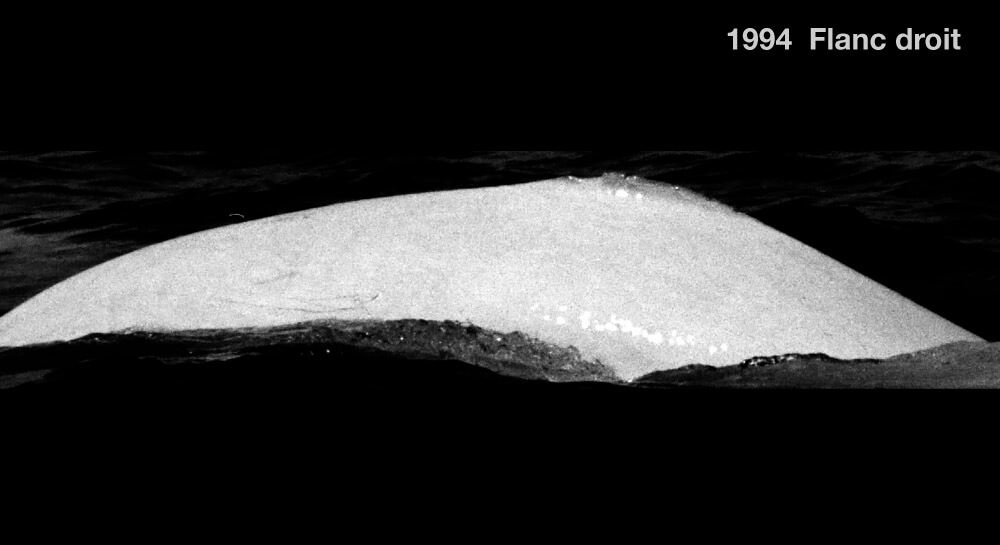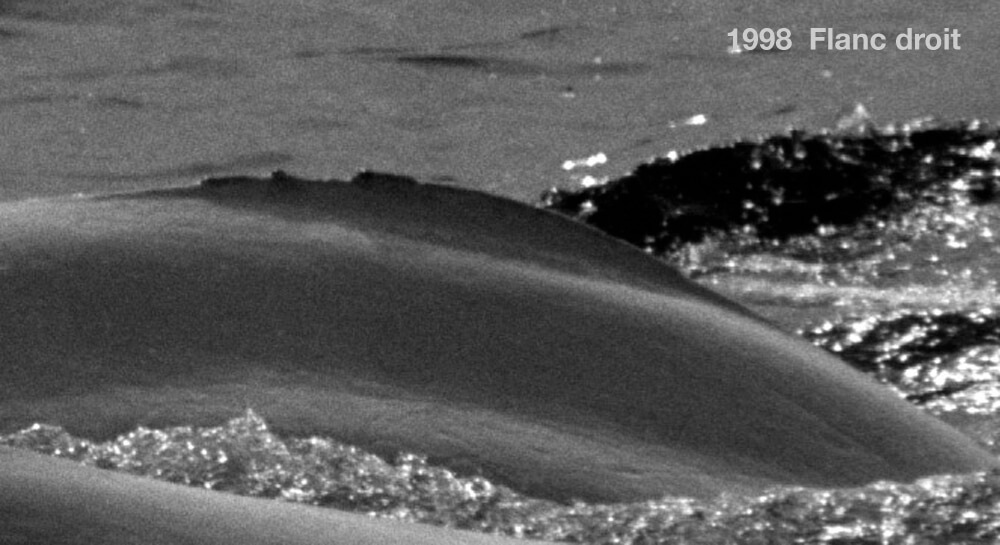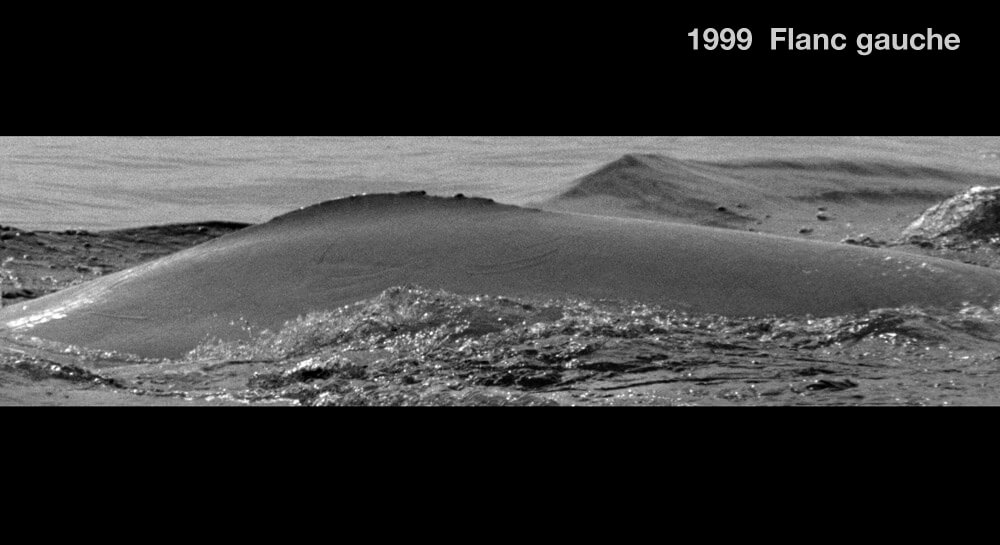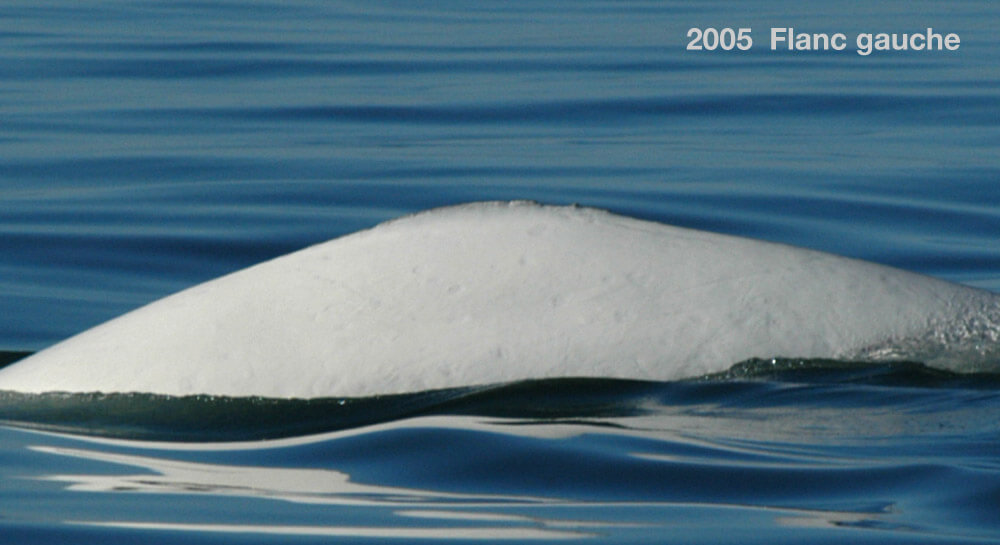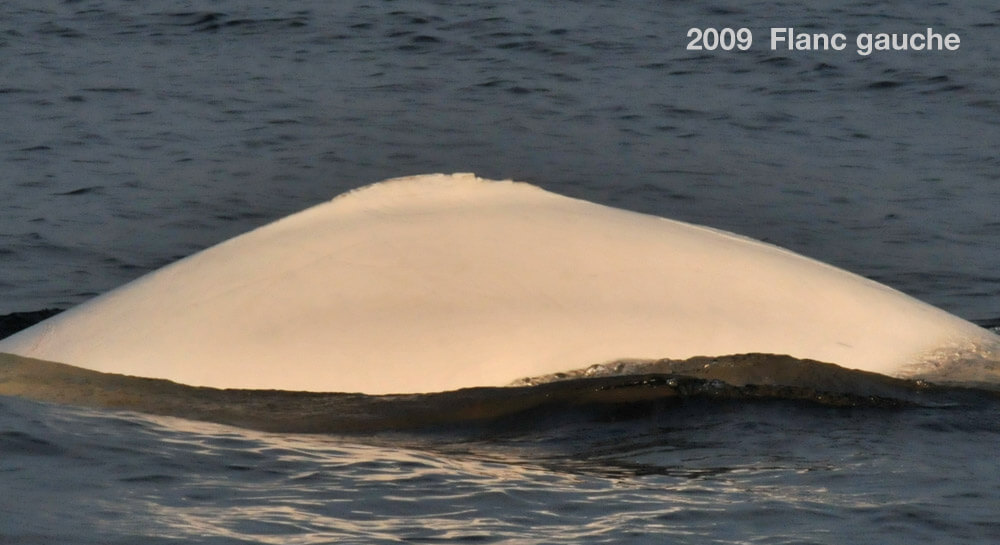Nics
Beluga

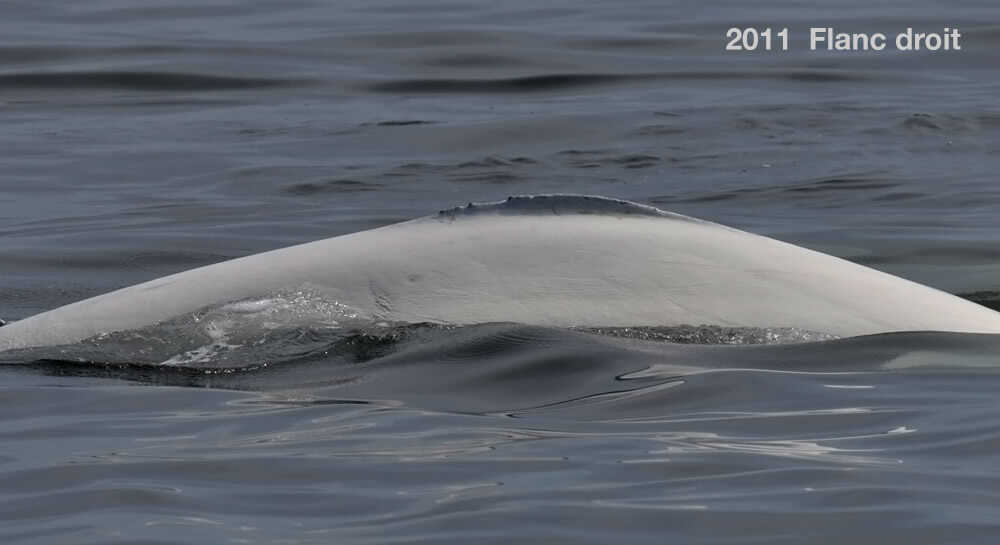
Adopted by the riverside municipalities of the St. Lawrence
-
ID number
DL0266
-
Sex
Presumed male
-
Year of birth
Around 1980
-
Known Since
1989
Distinctive traits
The silhouette of Nics’s well marked dorsal crest changed slightly in 1998 with the appearance of two new notches in the hind part of the crest.
Life story
When we first encountered Nics in 1989, he was still gray, but already fairly big. He gradually faded to become all white in the late 1990s. His dorsal crest remained black, however, making him easy to identify. Belugas fade from gray to white in colour between the ages of 12 and 16. Nics would therefore have been born around 1980.
His associations and the sectors that he frequents suggest that Nics is a male. Like other adult bulls of the population, he spends summers in groups composed essentially of males. He is part of one of the two male networks that frequent the Saguenay Fjord, its mouth as well as the part of the Estuary as far as Les Escoumins. The members of these networks do not intermingle with other male networks, even if their territories do overlap.
Within these networks, adult males form groups of companions who remain more or less faithful over the years. These associations may play a role in belugas’ reproductive lives. Nics’s most regular companions are males DL0218 and DL0670.
How Nics’s story unfolds will teach us volumes on the evolution of belugas’ social lives. For example, who will his lifelong companions be? By better understanding how belugas live, we will better be able to protect them.
Observations history in the Estuary
Years in which the animal was not observed Years in which the animal was observed
Latest news
Summer 2016, our 32nd season at sea with the belugas, was again rich in encounters and surprises. Among others, we saw Nics again on August 27. Although we don’t yet have a biopsy to confirm Nics’ sex, the rest of his story, associations and the areas he frequents, allow us to be more and more confident that Nics is indeed a male.
On August 27, 2016, we were sailing in the mouth of the Saguenay near îlet aux Morts when we spotted Nics in a flock of around sixty individuals, white adults and young gray adults. We also recognize DL0218 – a male from the Saguenay and long-time companion of Nics – as well as Trèfle, a male from the “Downstream boys” network particularly observed between Tadoussac and Les Escoumins.
The animals are very active : a “scene” representative of our encounters with herds of young males. Some belugas raise their heads to the surface, as if to spy on us, while others raise their tails out of the water. They dive and rise several times in a current bar, probably where the prey is trapped. An hour later, the tide reverses and the current bar eases. The animals’ behavior changes : they move very slowly downstream, taking advantage of the ebbing tide.
Nics is spotted in a herd of about twenty individuals off the south shore between the communities of L’Isle-Verte and Le Bic. The herd consists of both adults and young and we count at least two newborns. Nics is swimming in tight formation with several other large belugas. Judging by their size, it seems that they are all adult males. Amongst them, we also recognize DL0218, one of Nics’ regular companions. Although in summer males spend most of their time away from females, they are occasionally seen in their company (between 20 and 25% of the time). Why this is the case remains a mystery!
On August 9, 2011, we’re off the coast of Les Bergeronnes. Nics is in a herd of around 150 belugas, all white adults, divided into groups of 8 to 10 individuals. These large, ephemeral gatherings are mainly male. Gradually, the herd splits up, and Nics find himself in a smaller herd. The average size of these male herds is around twenty individuals.
Sponsors
The riverside municipalities of the St. Lawrence solidary adopted Neige, Nics, Bilou, Cica and Solidaire (2014).
Beauharnois; Bécancour; Candiac; Carleton-sur-Mer; Charlemagne; Chute‐aux‐Outardes; Châteauguay; Contrecoeur; Grande Rivière; La Pocatière; Lanoraie; Les Bergeronnes; Louiseville; Lévis; Matane; Montmagny; Montréal; New-Richmond; Notre-Dame-des-Sept-Douleurs; Percé; Pincourt; Port-Cartier; Québec; Repentigny; Rimouski; Saint-André; Saint-Zotique; Sainte-Anne-de-Sorel; Sainte-Anne-des-Monts; Saint‐Ignace‐de‐Loyola; Saint‐Siméon; Salaberry-de‐Valleyfield; Sept-Iles; Sorel-Tracy; Tadoussac; Varennes
Click on the names below to discover texts, drawings and videos composed by children of participating schools on Facebook as part of the Our Beluga’s Name is… contest.
Neige was named by the special education class of the École Saint-Alexandre in Port-Cartier.
Nics was named by the 5th and 6th grade class of the École Élisabeth Turgeon in Rimouski.
Bilou was named by the 3th grade class of the École de Ste-Thérèse-De-L’Enfant-Jésus in Saint-Jérôme.
Cica was named by the 2th grade class of the École de la Ruche in Lévis.
Solidaire was named by the 5th grade of the École Our Lady of Pompei in Montreal.

